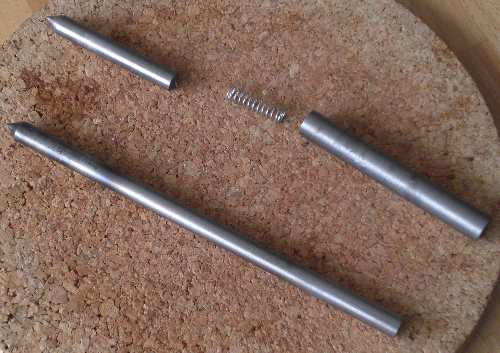Actually Shred, I do a lot of machine tapping as well, but on the lathe, very rarely on the mill. I have been given an auto tapping head that requires repairing, and once that is done, mill as well.
I showed this in a post I did yesterday, this is a 'largish' 3mm tap.
Physical limitations sometimes prevent me tapping things by hand in the lathe, so by using this and fingertip feel, I can safely powertap down to 2mm, I have never tried smaller, but I have no doubt it would work. The holes have to be spot on in size and the taps razor sharp, and the correct lube for the material in use, but since using it, I haven't broken a tap yet, and I made this a few years ago and it gets used almost daily when I am on the lathe.
I think it is all due to the constant turning pressure and automatic centring given by the machine, which if done by hand, the pressure and speed will always vary, and even using a loaded centre, the action of turning must put some sort of side load onto the tap. All I am doing is feeling on the cross handle, just holding it back with my thumb, feeling for when it starts to go tight at the bottom of the hole, then I just let go. The machine is then used to back the tap out the same way it went in.
For some reason, visitors cringe when they see me power tapping, expecting such small taps to break, but to me now, it is just another normal energy saving and practical procedure. I am not boasting because I can do it, as far as I am concerned, everyone should be able to do it. I am just showing that sometimes illogical things do work, and work very well indeed.
Is there something wrong with using something that isn't the norm in the home shop? It works perfectly for me.
Blogs








